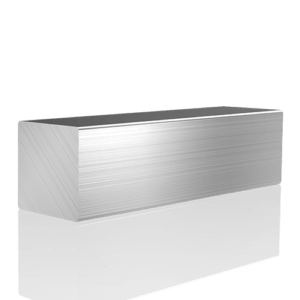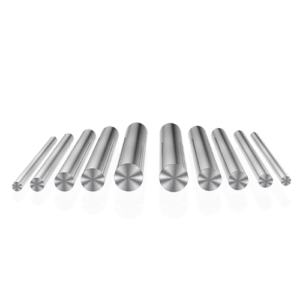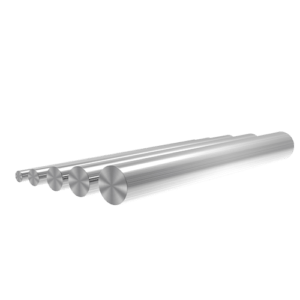Welcome to My Blog!
Before we dive into the content, I’d love for you to join me on my social media platforms where I share more insights, engage with the community, and post updates. Here’s how you can connect with me:
Facebook:https://www.facebook.com/profile.php?id=100090063158454
Now, let’s get started on our journey together. I hope you find the content here insightful, engaging, and valuable.
Table of Contents
Introduction

When it comes to selecting materials for high-temperature and high-corrosion environments, 310 stainless steel stands out as a superior option. Known for its excellent heat resistance, durability, and versatility, this alloy has been widely used in industries ranging from aerospace to manufacturing. In this article, we will explore the top 5 benefits of using 310 stainless steel, shedding light on why it is the preferred choice for many professionals working with challenging conditions.
What Makes 310 Grade Stainless Steel Unique?
310 stainless steel is a high-alloy steel primarily composed of chromium and nickel, which offers superior resistance to oxidation and corrosion compared to other types of stainless steel. Its high chromium (25%) and nickel (20%) content give it excellent heat resistance, making it ideal for high-temperature applications. Furthermore, 310 stainless steel retains its mechanical properties even in extreme temperatures, which is crucial for industries where high heat exposure is common.
Top Benefits of Using 310 Stainless Steel

Exceptional Heat Resistance
One of the standout features of 310 stainless steel is its remarkable heat resistance. This alloy can withstand temperatures up to 1,100°C (2,012°F) in intermittent service, making it an excellent choice for furnace components, heat exchangers, and other high-heat applications. Its ability to maintain strength at elevated temperatures ensures longer-lasting performance in environments that would degrade other materials.
Excellent Corrosion Resistance
310 stainless steel provides exceptional resistance to a wide range of aggressive environments, including sulfurous, acidic, and alkaline conditions. This alloy’s high nickel and chromium content help protect against oxidation and corrosion, ensuring its durability even in environments with harsh chemicals. This makes it an ideal material for equipment exposed to chemical and corrosive substances, such as gas turbines and flue gas systems.
Superior Strength at High Temperatures
At high temperatures, materials typically experience a reduction in strength. However, 310 stainless steel maintains its mechanical properties at elevated temperatures. This is especially beneficial in industrial applications where components must endure not only high heat but also mechanical stress. Its ability to retain tensile strength even in extreme conditions makes it reliable in many high-performance applications, including aerospace and power plants.
Versatility in Manufacturing
310 stainless steel is extremely versatile, making it suitable for a wide array of applications. Whether used in welding, machining, or forming, this alloy exhibits excellent workability, making it an attractive choice for manufacturers. Its adaptability allows it to be utilized in the production of components such as exhaust systems, boilers, and heat-resistant machinery.
Resistance to Thermal Cycling
In many high-temperature applications, the material may undergo repeated heating and cooling cycles. 310 stainless steel is resistant to the detrimental effects of thermal cycling, including cracking or deformation. This property ensures the longevity and reliability of components that experience constant temperature fluctuations, such as those in exhaust systems or heat exchangers.
How Does This Compare to Other Alloys?

While 310 stainless steel offers numerous benefits, it is important to consider how it compares to other stainless steel alloys, particularly in areas such as cost and specific applications. Below is a table that summarizes the key properties of 310 stainless-steel and how they compare with some other commonly used stainless steel alloys.
| Property | 310 Stainless Steel | 304 Stainless Steel | 316 Stainless Steel |
|---|---|---|---|
| Corrosion Resistance | Excellent | Good | Excellent |
| Heat Resistance | Very High (up to 1100°C) | Moderate (up to 870°C) | High (up to 925°C) |
| Tensile Strength | High | Moderate | High |
| Nickel Content | 20% | 8-10% | 10-14% |
| Chromium Content | 25% | 18-20% | 16-18% |
The table highlights that 310 stainless steel outperforms both 304 and 316 stainless steels in terms of heat resistance, making it ideal for extreme high-temperature applications. However, 316 stainless steel may offer slightly better corrosion resistance in marine environments, thanks to its higher molybdenum content.
Applications of 310 Stainless-Steel
310 stainless steel is used in a wide variety of industries due to its versatile properties. Common applications include:
- Furnace components: Due to its heat resistance, it is used in parts of furnaces such as trays, baskets, and flame shields.
- Exhaust systems: Its ability to withstand high temperatures makes it ideal for exhaust components in industries such as automotive and power generation.
- Heat exchangers: In applications where high temperatures and corrosion resistance are critical, 310 stainless steel is often used in the construction of heat exchangers.
- Chemical processing equipment: The excellent corrosion resistance allows it to be used in equipment exposed to aggressive chemicals.
Conclusion

In conclusion, 310 stainless steel offers a wide range of benefits, from its exceptional heat resistance to its versatility and strength at high temperatures. It is particularly beneficial in industries requiring materials that can withstand extreme environments without compromising performance. Whether you’re in the aerospace, chemical, or manufacturing industries, 310 stainless steel is a reliable material that can significantly improve the durability and longevity of your equipment.
FAQ
What is the maximum temperature 310 stainless-steel can withstand?
310 stainless steel can withstand temperatures up to 1,100°C (2,012°F) in intermittent service, making it ideal for high-heat applications.
Is it more expensive than other types of stainless steel?
Yes, 310 stainless steel is typically more expensive than alloys like 304 and 316, mainly due to its higher nickel and chromium content and superior heat-resistant properties.
Can 310 stainless steel be welded?
Yes, 310 stainless steel can be welded, but it requires special care due to its high chromium and nickel content. It is recommended to use filler rods designed for high-temperature applications.
Is it resistant to rust?
310 stainless steel is highly resistant to rust and corrosion, making it an excellent choice for environments where oxidation is a concern. However, its resistance to rust can depend on the specific environment and the presence of corrosive chemicals.
Can 310 stainless steel be used for food processing equipment?
While 310 stainless steel offers excellent corrosion resistance, it is not typically used for food processing due to its higher nickel content, which can be reactive in some food-related applications. For such uses, alloys like 304 stainless steel are often preferred.
